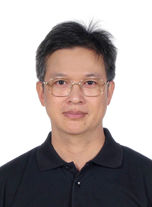
Professor
Institute of Quantum Electronics
Research Interests: Atomic clock, laser spectroscopy
Office Phone: 86-10-6275 6853
Email: jbchen[at]pku.edu.cn
Chen, Jingbiao is a professor in the School of Electronics, Peking University.
Prof. Chen received his undergraduate degree in physics at Hangzhou University in 1990, his Ph.D. in physics from Peking University in 1999 and was a postdoctoral researcher at the Pennsylvania state university from 2001 to 2004. His research interests include Active Optical Clock, Faraday Laser and Faraday Optical Clock, Compact Calcium Beam Optical Clock, Compact Rb/Cs Optical Clock, Cesium Beam Microwave Clock, Laser Spectroscopy.
Prof. Chen has published 80 papers in journals, and has been granted 18 Chinese/U.S./U.K Patents. He is the member of Technical Committee of Chinese Time Frequency Metrology.
Jingbiao Chen has research projects including the National Natural Science Foundation of China (NSFC), 863 projects. His academic achievements are summarized as follows:
1) Proposed and demonstrated the principle of active optical clock. Active optical clocks utilize a bad-laser cavity with cavity mode linewidth is much wider than that of the lasing gain profile. Compared with the recorded best super-cavity stabilized laser with PDH method, the center frequency of active optical clock is insensitive to the cavity-length noise, which is a formidable hurdle of available narrow linewidth laser light sources for next generation of optical clock with a linewidth of mHz. His group has established setups of active optical frequency standards based on lasing at 1469.9 nm in Cesium four-level configuration and lasing at 852 nm in Faraday laser configuration, and experimentally demonstrated the mechanism of lasing and suppressed cavity-pulling effect of active optical clock. The stability of best optical clocks may be improved by at least an order of magnitude using the mechanism of active optical clock.
2) Proposed and demonstrated the compact Calcium atomic beam optical frequency standard with electron-shelving detection, and compact Rb optical frequency standard. Atomic optical clocks have reached to E-18 level uncertainty, however, with huge volume size, which limits the application of optical clock outside the lab. His group has realized a Calcium atomic beam optical frequency standard with higher stability of 3.0E-14 at 1 s and 2.9E-15 at 200 s. Moreover, his group has demonstrated a compact Rb optical frequency standard with a preliminary stability of 1.2E?14 at 1 s and 2.1 E?15 at 80 s.




